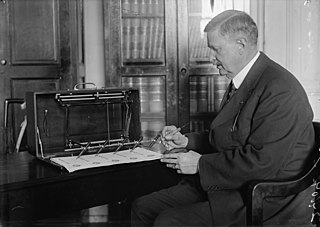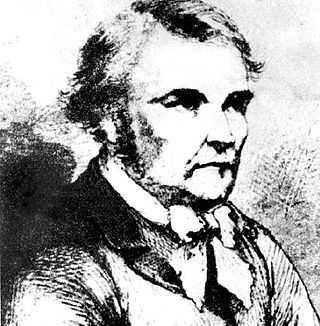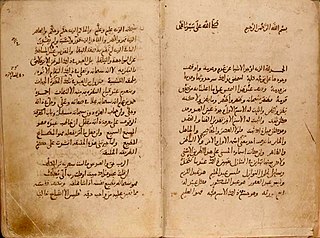"Baron" Charles Weisberg (June 5, 1947) was a US document forger who forged manuscripts, letters and signatures of celebrities and historical figures.
Weisberg forged autographs and letters of celebrities like Francis Hopkinson and manuscripts of Walt Whitman and Stephen Collins Foster. He also expanded to alleged works of George Washington and Abraham Lincoln and created surveys of Mount Vernon.
When forging Lincoln's signature, Weisberg sometimes used original US Civil War letters and wrote an "extension" of the original. However, Weisberg created long letters when Lincoln had usually written shorter, punctual missives. Robert Spring also forged letters from Washington but tended to drop the beginning of the G in Washington's name and omit the "g" in "go". He also used modern inks.
Weisberg was first arrested 1935 in New York for forgery. He was later charged with mail fraud in Pennsylvania for selling forged documents and autographs through mail. His last forgery was a Katherine Mansfield inscription in a copy of The Dove's Nest – a book that had been published posthumously.
Weisberg served two contiguous prison sentences in the 1940s and died on June 5, 1947, in Atlanta Penitentiary in Georgia.
A signature is a handwritten depiction of someone's name, nickname, or even a simple "X" or other mark that a person writes on documents as a proof of identity and intent. The writer of a signature is a signatory or signer. Similar to a handwritten signature, a signature work describes the work as readily identifying its creator. A signature may be confused with an autograph, which is chiefly an artistic signature. This can lead to confusion when people have both an autograph and signature and as such some people in the public eye keep their signatures private whilst fully publishing their autograph.

Autograph collecting is the practice of collecting autographs of famous persons. Some of the most popular categories of autograph subjects are presidents, military soldiers, athletes, movie stars, artists, social and religious leaders, scientists, astronauts, and authors.
Mark William Hofmann is an American counterfeiter, forger, and convicted murderer. Widely regarded as one of the most accomplished forgers in history, Hofmann is especially noted for his creation of documents related to the history of the Latter Day Saint movement. When his schemes began to unravel, he constructed bombs to murder three people in Salt Lake City, Utah. The first two bombs killed two people on October 15, 1985. On the following day, a third bomb exploded in Hofmann's car. He was arrested for the bombings three months later, and in 1987 pleaded guilty to two counts of second-degree murder, one count of theft by deception and one count of fraud.

Konrad Paul Kujau was a German illustrator and forger. He became famous in 1983 as the creator of the so-called Hitler Diaries, for which he received DM 2.5 million from a journalist, Gerd Heidemann, who in turn sold it for DM 9.3 million to the magazine Stern, resulting in a net profit of DM 6.8 million for Heidemann. The forgery resulted in a four-and-half-year prison sentence for Kujau.

Art forgery is the creation and sale of works of art which are falsely credited to other, usually more famous artists. Art forgery can be extremely lucrative, but modern dating and analysis techniques have made the identification of forged artwork much simpler.

An autopen is a device used for the automatic signing of a signature. Prominent individuals may be asked to provide their signatures many times a day, such as celebrities receiving requests for autographs, or politicians signing documents and correspondence in their official capacities. Consequently, many public figures employ autopens to allow their signature to be printed on demand and without their direct involvement.
Joseph Cosey is the favorite alias of notorious forger Martin Coneely. He was very skilled at mimicking the handwriting of historical American figures.

Denis Vrain-Lucas (1818–1882) was a French forger who sold counterfeit letters and other documents to French manuscript collectors. He even wrote purported letters from biblical figures in French.
Robert Spring (1813–1876) was an English-born forger who forged letters from luminaries like George Washington, Benjamin Franklin and Horatio Nelson.
Alexander Howland Smith, also known as the "Antique Smith", was a Scottish document forger in the 1880s. His forgeries still surface today.

The Ireland Shakespeare forgeries were a cause célèbre in 1790s London, when author and engraver Samuel Ireland announced the discovery of a treasure-trove of Shakespearean manuscripts by his son William Henry Ireland. Among them were the manuscripts of four plays, two of them previously unknown.
Kenneth W. Rendell, is the founder of The International Museum of World War II in Boston, and an American dealer and expert in historical documents. His father, Harry, was a pharmacist, and his mother, Pauline, an art teacher. His first marriage (1967) ended in divorce (1985). His first son, Jeffrey, was born in 1971; his second, Jason, was born in 1982. He married journalist Shirley McNerney on July 14, 1985; their daughter Julia Louise was born in 1994.
In 1997, a cache of documents were discovered, purportedly proving an affair between President John F. Kennedy and Marilyn Monroe, as well as other illicit relationships, but were later determined to have been part of an elaborate hoax. Lawrence X. "Lex" Cusack had forged the documents under the guise that they had belonged to his father, an attorney who represented Monroe's mother Gladys Baker Eley as well as the Archdiocese of New York. Investigative journalist Seymour Hersh had vouched for the authenticity of the documents, with the original manuscript of his 1997 book The Dark Side of Camelot including many statements that were sourced from them. After the hoax came to light, Hersh removed the material shortly before publication. Before the scandal broke, there were also plans for an ABC-backed TV special or film.

William Shakespeare's handwriting is known from six surviving signatures, all of which appear on legal documents. It is believed by many scholars that the three pages of the handwritten manuscript of the play Sir Thomas More are also in William Shakespeare's handwriting. This is based on many studies by a number of scholars that considered handwriting, spelling, vocabulary, literary aspects, and more.
The following outline is provided as an overview of and topical guide to forgery:
Leonore Carol "Lee" Israel was an American author known for committing literary forgery. Her 2008 confessional autobiography Can You Ever Forgive Me? was adapted into the 2018 film of the same name starring Melissa McCarthy as Israel.

An autograph or holograph is a manuscript or document written in its author's or composer's hand. The meaning of autograph as a document penned entirely by the author of its content, as opposed to a typeset document or one written by a copyist or scribe other than the author, overlaps with that of holograph.
Tobia Nicotra was an Italian forger who produced counterfeit works of artists in various disciplines. In 1937, he was described as "the most proficient forger of autographs". He may have produced as many as 600 forgeries before he was caught.
Operation Bullpen was an FBI investigation into forged celebrity autographs and sports memorabilia that ran from 1999 until 2006. The investigation uncovered $100 million worth of fraud that occurred in the United States.

Eugene Field II (1887–1944), the son of the poet Eugene Field, forged autographs in old books and other items. Among others, Field forged the signatures of his father, the poets Bret Harte and Rudyard Kipling, the US presidents Abraham Lincoln and Theodore Roosevelt, and humorist Mark Twain.